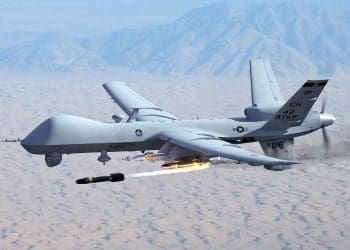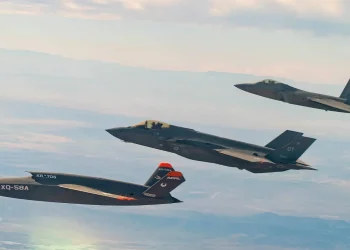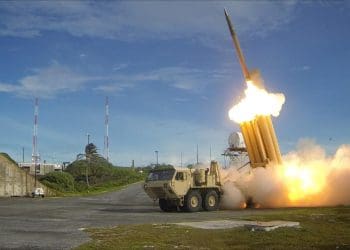In a bold move aimed at reshaping the future of military logistics, the U.S. Department of Defense, through its Defense Advanced Research Projects Agency (DARPA), has launched an ambitious project dubbed “Cost Efficient Cargo.” The initiative is a groundbreaking effort to design an autonomous, heavy-lift drone capable of carrying up to 31.75 tons of cargo—a staggering load twice the capacity of the CH-53K King Stallion helicopter, currently the U.S. Marine Corps’ most powerful heavy-lift aircraft.
However, unlike the King Stallion, which excels at long-range missions, DARPA’s new drone concept would be focused on shorter, critical trips. The primary objective is to transport heavy loads between ships and beaches or across challenging inland terrains like rivers or ravines, providing a rapid solution to logistical barriers in combat environments.
A Call for Innovation: DARPA’s Vision
In an official Request for Information (RFI), DARPA seeks innovative proposals from industry experts for the development of an uncrewed heavy-lift drone that can carry 70,000 pounds (approximately 35 tons). The RFI specifies that the drone must be built using existing engine and transmission technologies while departing from conventional helicopter designs. The drone’s operational range is envisioned to be around 25 miles (40.23 km) at an altitude of 500 feet, ferrying cargo swiftly from pickup points to destinations before returning to its base.
The driving force behind this initiative is the U.S. military’s growing need for fast, flexible transport solutions in high-intensity conflict scenarios, particularly in areas with significant anti-access/area denial (A2/AD) defenses, such as those posed by adversaries like China. Current methods of overcoming natural and man-made obstacles—such as destroyed bridges, ravines, or rivers—often involve time-consuming engineering solutions like floating bridges or amphibious vehicles, leaving military operations vulnerable to counterattacks.
Why This Matters: The Strategic Shift
The “Cost Efficient Cargo” project is aimed at accelerating the movement of heavy equipment in amphibious and airborne operations, where establishing a beachhead or crossing contested areas quickly can be the difference between success and failure. Currently, the CH-53K King Stallion can carry impressive loads of up to 36,000 pounds (16.33 tons), but the aircraft comes with a hefty price tag of around $118 million per unit and is limited in its cost efficiency and vulnerability to enemy defenses.
This drone, by contrast, promises to be a cost-effective, short-range alternative, specifically tailored for moving critical supplies and vehicles in the most dangerous and difficult-to-reach locations.
Exploring New Configurations
DARPA is entertaining a variety of potential configurations for this heavy-lift drone, including options for hybrid propulsion systems powered by internal combustion engines, electric motors, or a combination of both. While full autonomy is desired for future iterations, the immediate focus is on identifying innovative designs that can address the urgent needs of U.S. military logistics.
The development plan includes building scaled-down prototypes to mitigate risks and iron out engineering challenges before committing to a full-scale development and deployment program.
Lessons from the Battlefield: Ukraine and Beyond
The ongoing war in Ukraine has reinforced the need for agile, fast-moving logistics solutions. The conflict has demonstrated how vulnerable traditional transport methods, like temporary bridges, can be to precision strikes and surveillance. The rapid deployment of forces and supplies is critical in such environments, and this heavy-lift drone could play a pivotal role in ensuring the U.S. military can quickly cross rivers, canyons, and other obstacles without the lengthy delays associated with current engineering solutions.
This drone is also being designed with the flexibility to transport large and heavy cargo, such as 40-foot ISO containers or even armored vehicles like the M2 Bradley. While the Bradley weighs approximately 80,000 pounds (36.29 tons)—slightly exceeding the drone’s projected capacity—DARPA anticipates that by transporting vehicles without ammunition or fuel, they can be lightened enough for air transport.
Addressing Logistical Challenges in Future Conflicts
The logistical demands facing the U.S. military are growing increasingly complex, especially as it gears up to face near-peer adversaries in potential conflict zones. The heavy-lift drone offers a solution to rapidly move equipment in contested environments, especially where traditional air and sea routes are compromised by enemy defenses. DARPA’s exploration into this technology marks a forward-thinking approach, aiming to future-proof U.S. military capabilities in an era where speed, flexibility, and efficiency will be paramount.
However, questions still linger about the long-term feasibility of maintaining a fleet of these drones. Can they deliver the operational demand at a lower cost, and will they be capable of functioning effectively in real-world combat environments?
The Future of U.S. Military Mobility
Despite these unknowns, the “Cost Efficient Cargo” project is poised to reshape military heavy-lift transport. The ability to autonomously lift twice the load of the King Stallion would be a game-changer for U.S. forces, particularly in environments where time and terrain are the enemy. This project is a significant step in DARPA’s quest to redefine military logistics for the 21st century, and if successful, could become a cornerstone of U.S. military operations for decades to come.
As DARPA continues to push the boundaries of innovation, the future of military mobility may be defined not by traditional aircraft but by autonomous drones, ushering in a new era of rapid, resilient, and adaptable logistics on the battlefield.










